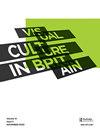“未来的使徒”:威廉·布莱克作为普世宗教世界观的先驱
Q2 Arts and Humanities
引用次数: 1
摘要
本文考察了二十世纪下半叶威廉·布莱克的一系列批评,这些批评将他的作品塑造成普遍宗教世界观的化身。特别是,它聚焦于20世纪20年代中期至40年代初Max Plowman和John Middleton Murry的作品,对他们来说,Blake的作品是通往永恒和未来的门户,他们将Blake誉为现代精神世界的先知。这篇文章考察了这一时期英国艺术家作品中的类似原则,并通过探索普洛曼和默里的布莱克之间的相似之处,以及1950年至51年澳大利亚宗教艺术布莱克奖(Australian Blake Prize for Religional art)使用画家和诗人的名字来构建。本文章由计算机程序翻译,如有差异,请以英文原文为准。
An ‘Apostle of Futurity’: William Blake as Herald of a Universal Religious Worldview
This article examines a strand of William Blake criticism from the second quarter of the twentieth century that styled his work as an embodiment of a universal religious worldview. In particular, it focuses on the writings of Max Plowman and John Middleton Murry from the mid 1920s to the early 1940s, for whom Blake’s works were portals into eternity and the future, and who celebrated Blake as prophet of a spiritual Weltanschauung for the modern age. The article examines similar principles in the work of British artists in this period, and is framed by exploring a parallel between the Blake of Plowman and Murry, and the use of painter-poet’s name for the Australian Blake Prize for religious art, inaugurated in 1950–51.
求助全文
通过发布文献求助,成功后即可免费获取论文全文。
去求助
来源期刊

Visual Culture in Britain
Arts and Humanities-Visual Arts and Performing Arts
CiteScore
0.60
自引率
0.00%
发文量
1
 求助内容:
求助内容: 应助结果提醒方式:
应助结果提醒方式:


